Melvin Charney’s garden made for the Canadian Centre for Architecture in Montreal is firmly and unequivocally a city garden. It is surrounded by traffic on all sides, rising up from a piece of land lost between the entry and exit ramps of a busy expressway. It is composed of elements found in many gardens — plants, sculptures and the fragments of buildings — yet it combines them in a way that makes this garden unlike any other I know.
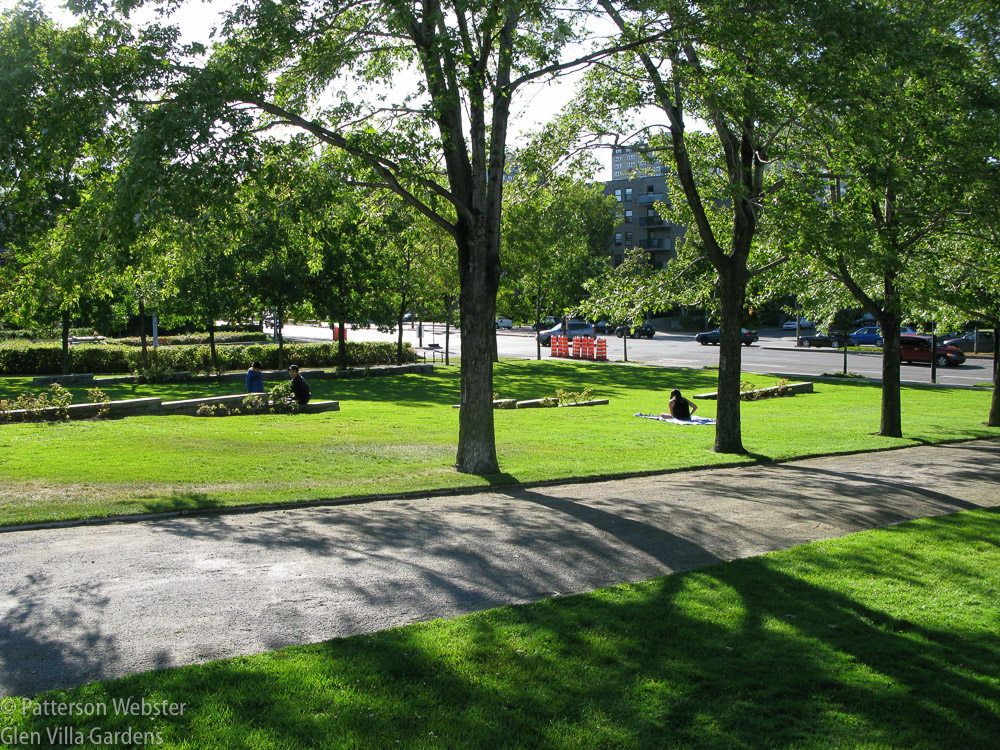
A grassy meadow abutting a busy Montreal street offers a place to relax and enjoy a sunny day.
Charney’s garden in the city pays tribute to the past and, simultaneously, comments on the present. It is a masterpiece, too little known and too rarely acknowledged as such.
It’s a tough garden to get a handle on, not at all like the easy urban green espoused by Frederick Law Olmstead. It is not a flowery retreat set in “the greatest possible contrast to the restraining” city around it. Far from it. It is a garden that celebrates the city, as it is and as it was.
The garden fronts on one of Montreal’s busiest boulevards, directly across from the Canadian Centre for Architecture. The CCA is both a museum and a research centre. Architecturally the building brings together the old and the new — a contemporary section, designed by Peter Rose with Phyllis Lambert as consulting architect, is beautifully wrapped around an historically important 19th century mansion.
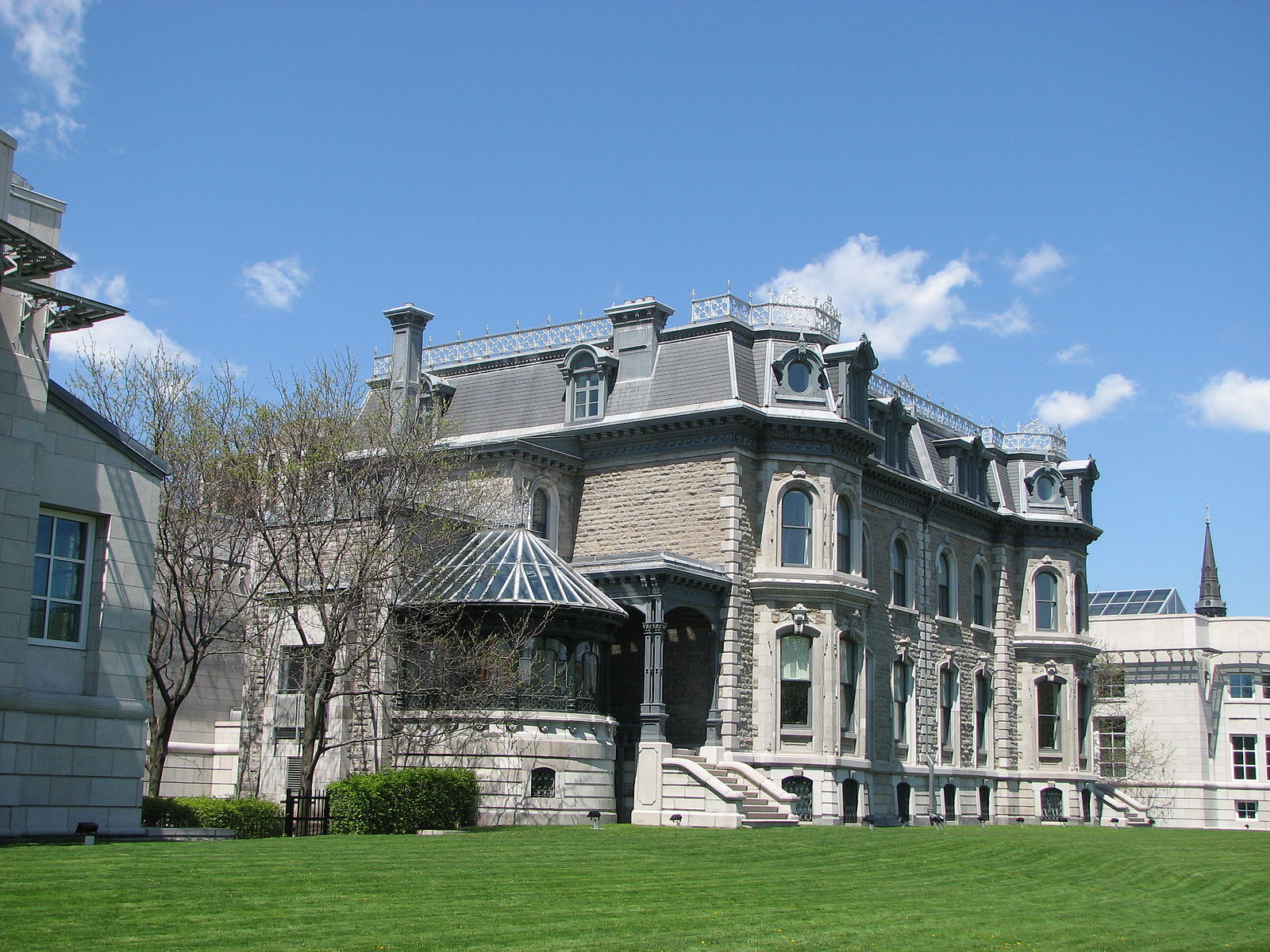
Photo courtesy of the Canadian Centre for Architecture. Portions of the contemporary building can be seen on either side of the historic house. The contemporary museum continues around the back of the house, leaving only its façade open to view.
Urban as well are the circumstances that led to the creation of the garden. The mansion, known as Shaughnessy House, was in danger of being destroyed by urban development; it was saved by CCA founder and Director Emeritus Phyllis Lambert and by her commitment both to historic preservation and to architectural innovation.
This Janus-sighted commitment underlies every aspect of Charney’s garden, making it the perfect complement to the CCA itself.
A prominent feature of the garden, the one most people driving past will notice first, is an imposing stone construction positioned on a grassy lawn. It is a portion of the front wall of a house, one that might once have been as imposing as the mansion across the street.
At first glance, a passer-by might wonder what happened. Did lightning strike, setting the house on fire? Was a wrecking crew stopped when their job was only half done? A more careful inspection reveals the real story: the façade is Charney’s construction, the first element in the story this garden tells.
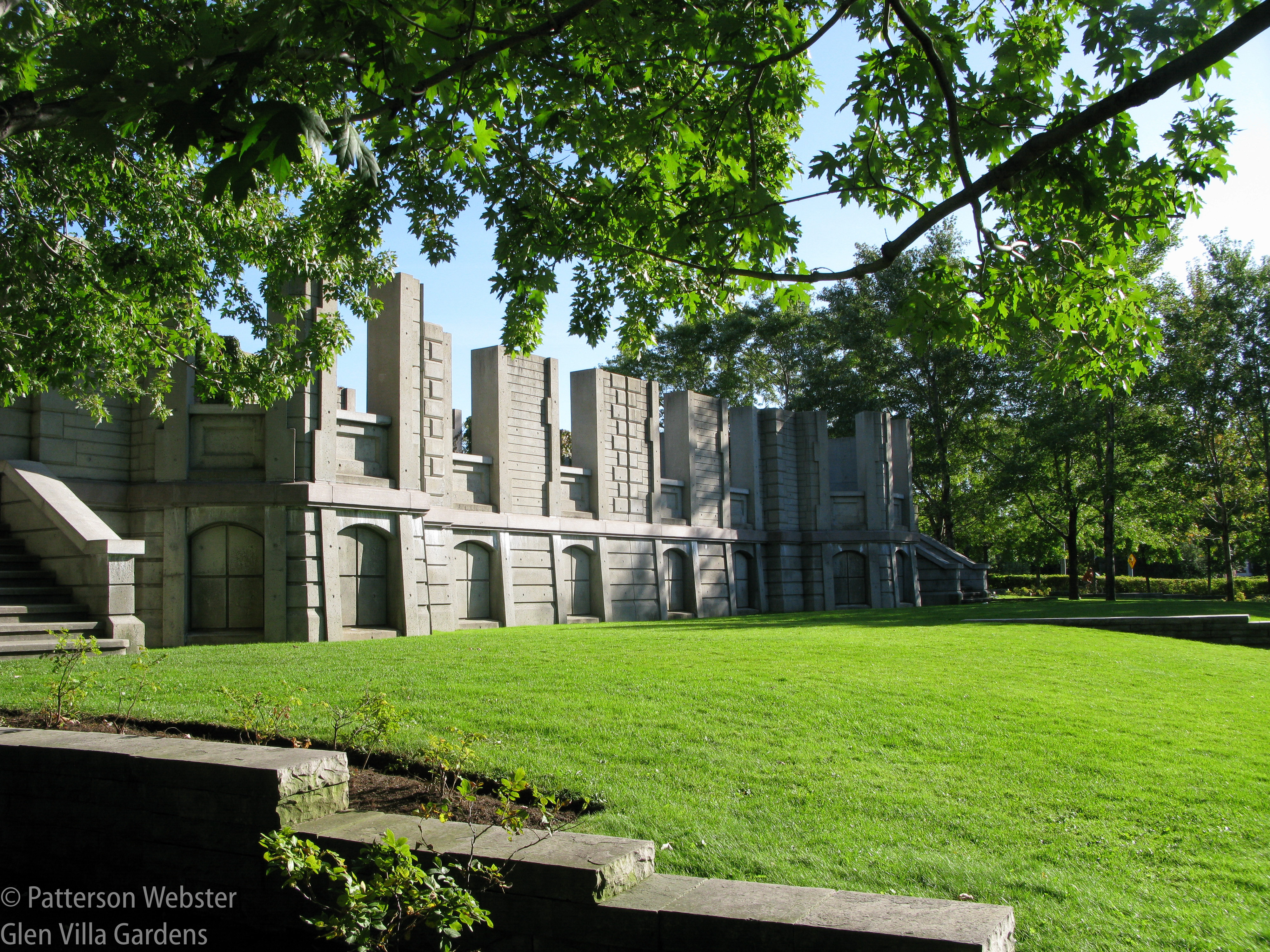
Seen in the foreground is one of several stone walls that emerge from the sloping ground. You can think of them as dividing sections of property — first farm fields, then city houses.
Perhaps more rightly the story should be titled a play. Because this is a theatrical garden, composed of scenes designed to be seen. The site itself is tipped up like a raked stage, rising from René Lévesque Boulevard to a wide platform that overlooks the Ville Marie Expressway. The partial façade that faces the Boulevard is like a false front on a western movie set.
It is, in fact, a mirror image of the mansion it faces, the first of many doubled or reflected images in the garden. The real Shaughnessy House is mirrored by the incomplete house, and this incomplete house is, in turn, re-presented in a different form, a house perched atop a column.
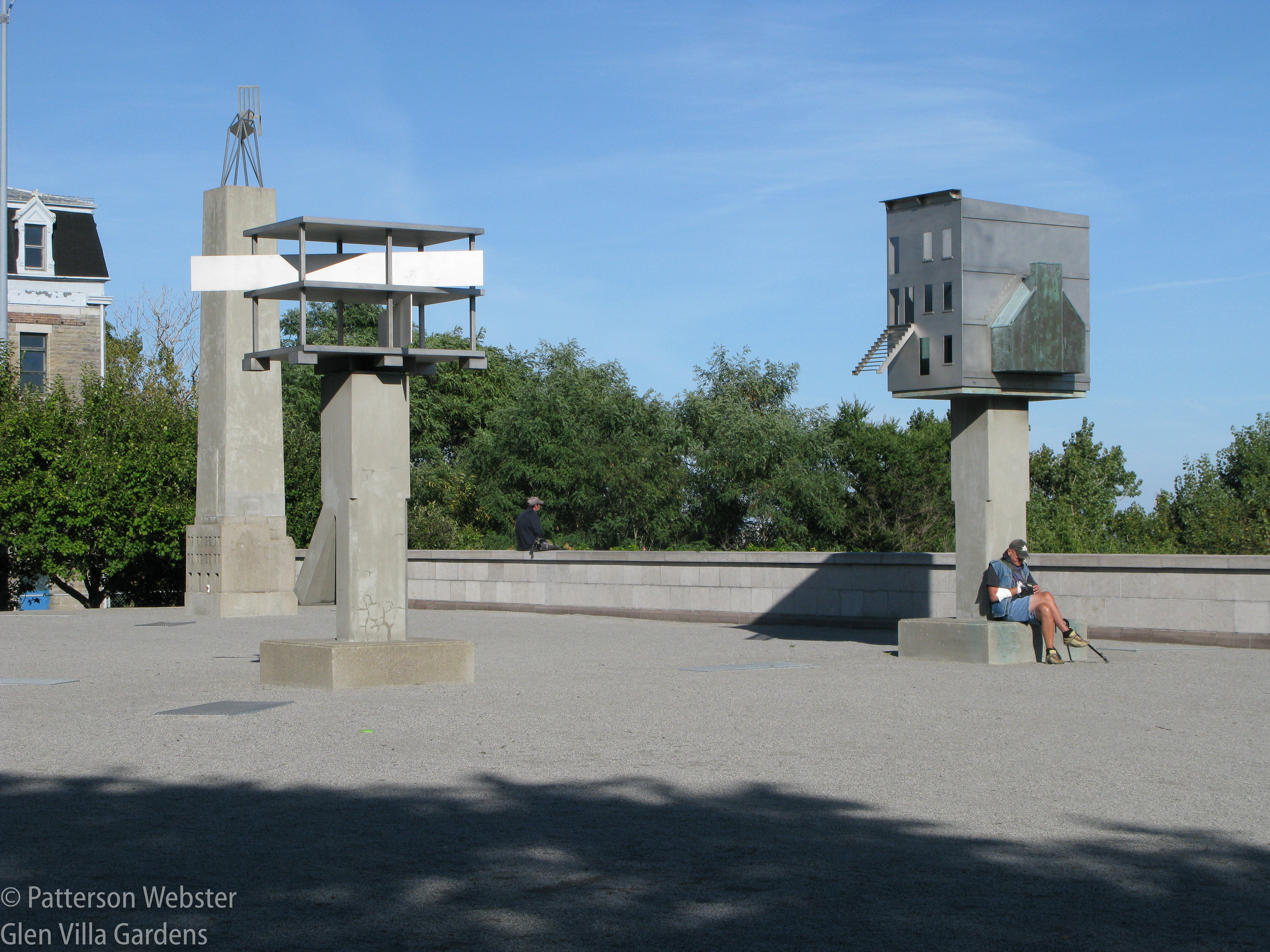
To the left of the model house is a stripped-down version of a house placed on top of a dancing Domino. Those familiar with Le Corbusier will recognize the reference to his early 20th c Dom-ino House, a hyphenated name that combines domus with innovation.
These Allegorical Columns are the stars of Charney’s garden play. They recall the herms that marked boundaries and land divisions in Greek and Roman times or the allegorical statues that lined garden walks. And like statues in Renaissance gardens, they relate a story to those in the know, or to those who make the effort to understand.
Charney’s columns do more, though, than reflect his erudition. Continuing the mirroring that began with the mirrored façade, they bring reflections of the urban landscape that lies beyond the garden walls into the garden itself. The many chimney stacks in the city, the twin spires of a church, grain elevators — the Allegorical Columns present these as architectural forms, objects that might be studied in the museum that the garden completes.
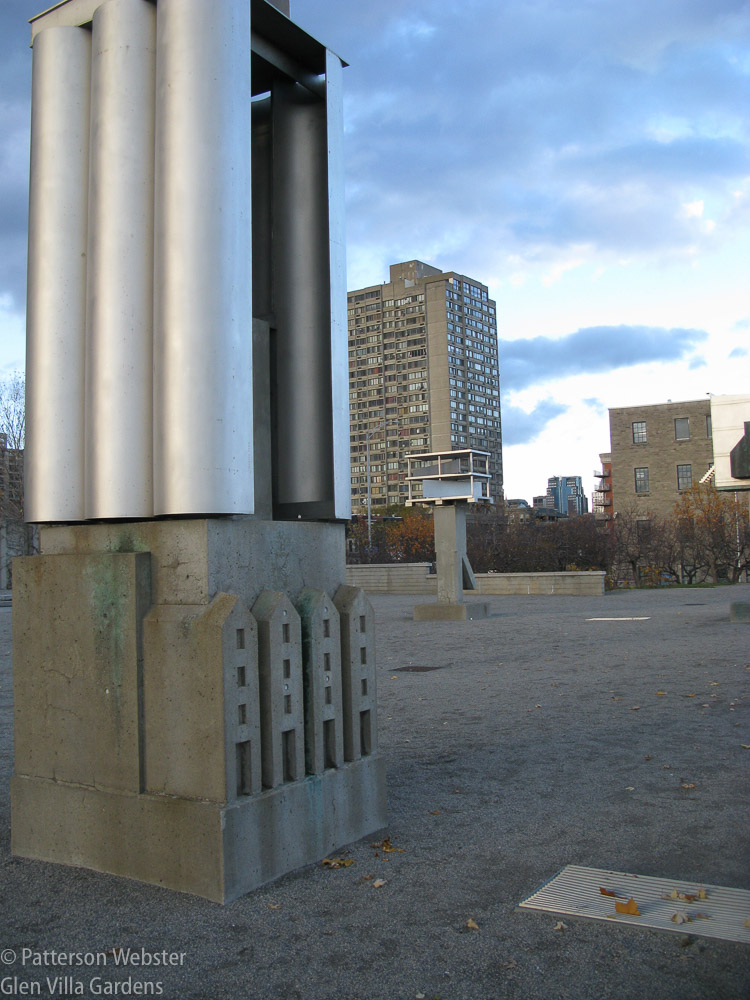
Grain elevators, chimney stacks or the columns of a modern-day temple? Whichever you choose, they stand atop the tall tenement buildings below.
Most powerful to me are the domestic references that appear on these columns. A house with the prominent staircase characteristic of Montreal abuts the outline of a typical maison Québecoise, the type of house it replaced,
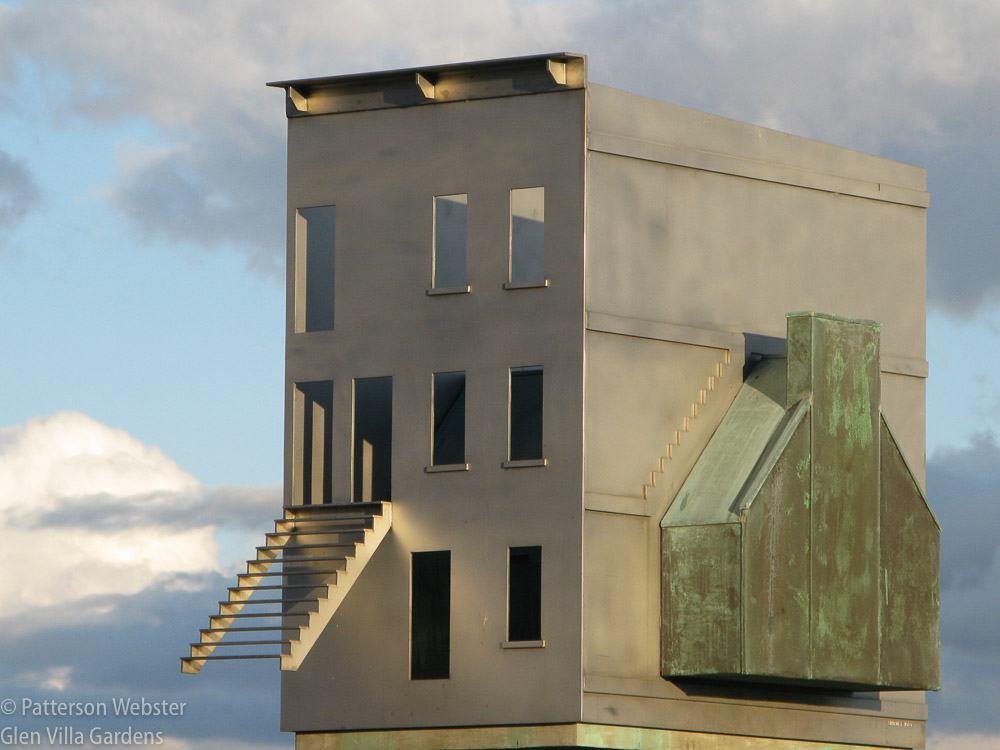
A close-up of the model house seen in a previous photo shows a staircase descending to emptiness. Reverse the direction and you can see it as a stairway to a domestic heaven. I prefer the latter explanation.
A featureless house perches high in the sky, atop one of the columns that reflect the twin spires of Sainte Conégonde church in the distance.
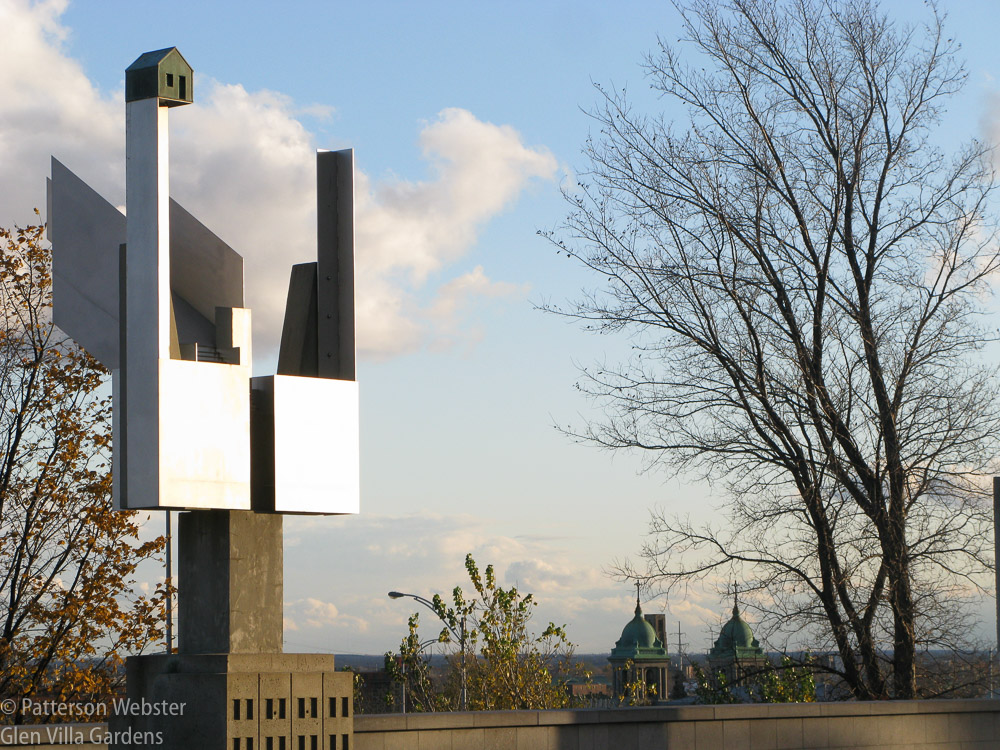
Shapes like wings protrude from the back of the arms that rise up to hold a tiny house.
A temple-like structure, house to the gods, stands nearby.
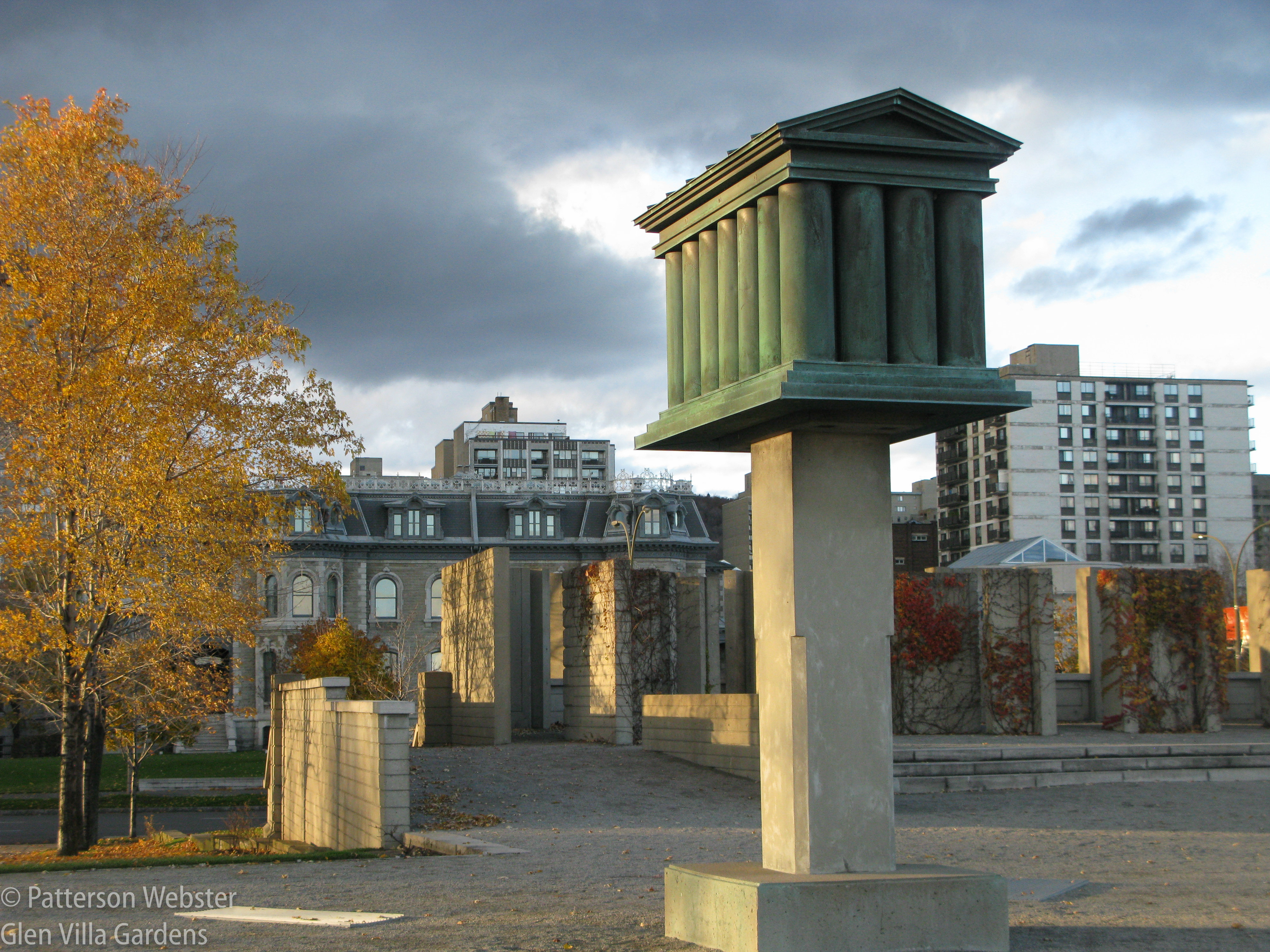
La Maison Carrée? The model certainly makes me think of that ancient building in Nimes, one of the Roman Empire’s best preserved temples. It served as Thomas Jefferson’s model for the Virginia State Capital and I grew up knowing its familiar face.
So what makes this creation a garden? It contains plants, carefully chosen to reflect what was once found on the site. Shrubs and flowers grow along the walls that Charney built to reflect the divisions between farm fields — prickly raspberry bushes, wild roses and sumac. The landscape of rural fields is seen in the meadow that fronts the street. And there are trees — indigenous maples and apples like the ones that once grew in an orchard on the site. They aren’t arranged in clumps à la Olmstead or Capability Brown but in rows appropriate to the history of an agricultural-turned-urban site.
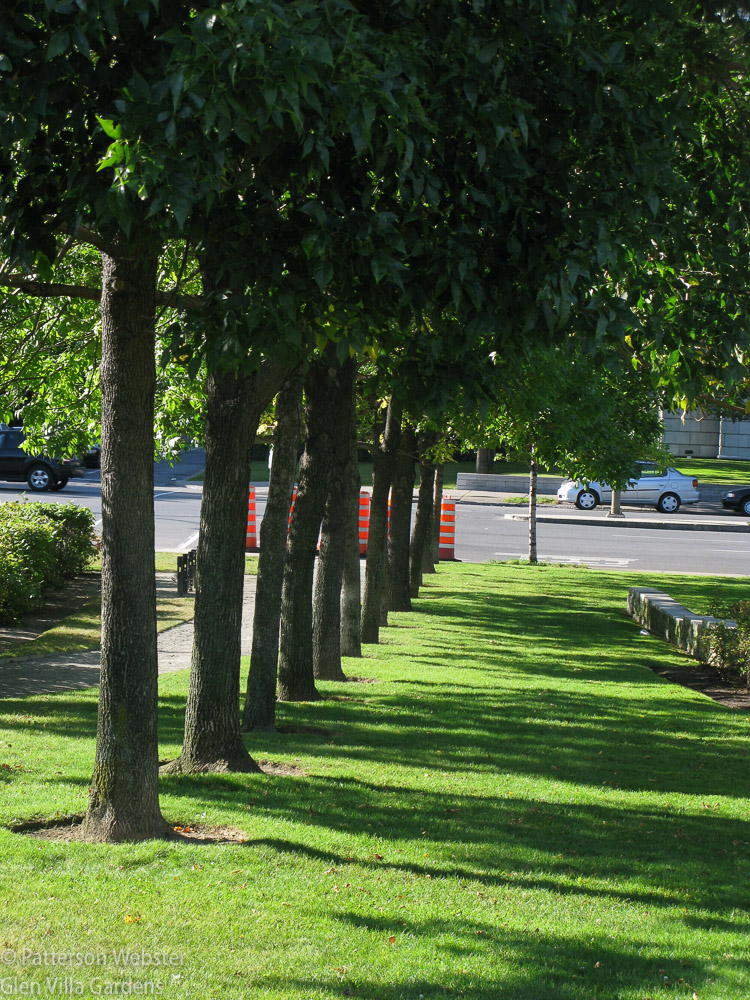
In the 1850s there were many orchards in this part of Montreal. Apple orchards still are found off the island in the Eastern Townships. And orange construction cones are found everywhere.
But neither plants nor statuary alone can make any place a garden. So does using that familiar label do a disservice Charney’s creation? Or, on the contrary, does it do a disservice to the idea of ‘garden’ that most people accept?
For me, the answer to both questions is no. This is, unmistakably and unquestionably, a garden. It does everything I want a garden to do — everything a garden should do. It is place for contemplation and introspection, a place of refuge, a gathering spot for passersby. It is a designed space that — echoing Pope’s familiar phrase — respects the genius of the place. It is a layered landscape, as complex as the city that surrounds it. It’s a marvel, a living, growing creation that enriches the life of all who see it and take part in it.





